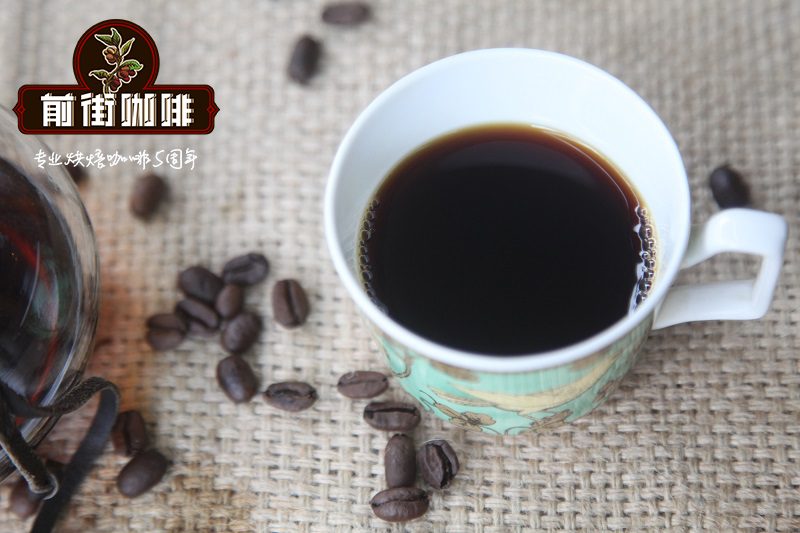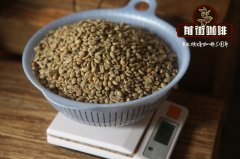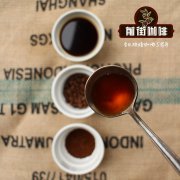Panamanian Coffee theme | what are the estates of Panamanian Coffee?
Professional coffee knowledge exchange more coffee bean information please follow the coffee workshop (Wechat official account cafe_style)

What is the estate of Panamanian Coffee?
Esmeralda Manor
Let's get to know the famous Panamanian emerald-Esmeralda Manor. Panamanian coffee is basically grown in a manor, and most of the owners of the estates are wealthy families. If you visit their manor and please get on a private plane, don't be surprised. Yes, this is their strength. The main purpose of most estates to grow coffee is not just to make money, but also to treat coffee. It is idealized and purposeful. Haines, a Swede, in 1924. Elliott founded Esmeralda Farm, which was not a coffee grower but a ranch. Forty years later, Daniel Lou in 1964. Mr. Bidarson's grandfather, Luther Ruffer. Mr. Bidarson bought Esmeralda Farm in order to have an old home after retirement, grandfather Luthor. Mr. Bidasson was born in Sweden and served as president of the Bank of America and director of United Nations Development. His son Blaise. Mr. Bidarsson moved to Panama from California in 1973 and inherited his father's farm. In 1987, he converted most of the farm to growing coffee. In 1994, he invested in the machinery and equipment of refined coffee to create a brand. While Mr. Bidarson and his wife Susan started a formal business on the coffee farm, they also raised three children, Elligo (born in Philadelphia in 1966), Rachel (born in Sweden in 1967) and Danielu (born in Panama in 1974). In 1996, Blaise and Rachel visited a farm for sale in the Haramijun area of the Bocketi Valley, and was attracted by the beautiful farm and immediately bought it. This is Esmeralda? Daniel Lou, the third son of Haramiqiong Farm. It is in this farm that Mr. Bidasson has grown Geisha coffee, which has attracted the attention of the coffee world.
At this point, many manors in Panama gradually come into everyone's view.
Alida Manor in Panama
The farm was owned by the Lamastus family, and the name of the farm, Elida Alida, was the name of the then farmer, Mrs. Robert Louis Lamastus. Elida Manor is located in the Boquete producing area. Coffee is grown from 1670 meters to 1850 meters above sea level. There are three main varieties in Elida Manor, namely, Catuai (Kaduai) and Typica (Iron Card) Geisha (Rose Summer). The manor's processing plant is halfway up the hillside. After the coffee is picked, it can be transported to the factory for processing as soon as possible to ensure that the quality of the coffee fruit will not be affected. Of course, Elida's environment is also suitable for growing other high-quality temperate crops, especially tree tomatoes and some uncommon high-altitude fruits, which are interestingly often found in Elida coffee. In addition to the unique ultra-high altitude and microclimate, Mr. Wilford, the owner of the manor, has also made considerable efforts in harvesting and processing. In order to meet the highest standard, the coffee at Elida Manor is only allowed to pick the most ripe coffee fruit (Ripe on Pinton) by hand. The maturity of the fruit is high, and the sugar content of pectin is naturally high, which is also the basis for producing high-quality Elida flavor.
Manor Elvira, Panama
Compared with Emerald Manor and Alida Manor, Elvira Manor looks young, but the legendary experience of the owner Gonzalo Palenzuela can be traced back to 40 years ago. NIPPON AMERICA was founded in the United States, focusing on the production and sales of electronic products, and its brand gradually formed a greater influence in North America, especially in the eastern part of the United States. In the 1990s, he handed over the company to his son. With his childhood dream of growing coffee, he came to Panama and bought the estate next to the Emerald Manor and named it Elvira Manor. Unlike other estates, Gonzalo Palenzuela devoted almost all his energy to the cultivation and cultivation of coffee beans from the very beginning. He always believed that the more natural, the more original the coffee is the best and the most in line with the concept of health. At present, the manor has seven blocks, which are planted with Rosa, Pakamara, Pacas, Kaddura, Obota OBATA, Malagoji with MARAGOIPE and other varieties, while each park also grows a variety of fruits, if you come to the manor, in addition to coffee, you will also taste a variety of very delicious fruits. I believe that in the near future, more coffee lovers will know and love Elvira coffee.
Hartman Manor in Panama
Hartman's story, like his coffee, is legendary. Hartman Manor is located in Chilidge, Santa Clara. Hartman Manor is a family business founded by Latip Hartman (son of Eloise) in 1940. In 1966 Latip married Dinola Sandy of Costa Rica. They have five sons, Latipa Jr., Alan, Alexander, Alice and Kelly. Each family member is responsible for the growth management, harvesting and handling of the coffee and the visit to the manor. Hartman Manor has a wide variety of coffee, including Typica, Kaddura, Catuai, Bourb ó n, Pacamara, Maragogipe and Geisha. There are many treatments of Hartman Manor coffee beans, especially the red wine treatment, which is also called red wine treatment, which is inspired by the brewing technology of red wine. The selected coffee cherries are placed in a specific container with a device similar to a red wine fermentation suppository or a single exhaust valve. In this way, carbon dioxide can be spilled through the device to control the concentration of air in the container. At this time, the coffee cherries in the container are fermented with acetic acid, and the beans are relatively bright, clean and citric acid.
Of course, there are many very excellent estates in Panama, such as Villa Donica Manor, Valentine Manor, Caesar Louis Manor, Hope Manor, Carmen Manor, Jensen Manor and so on. It needs to be further understood.
Important Notice :
前街咖啡 FrontStreet Coffee has moved to new addredd:
FrontStreet Coffee Address: 315,Donghua East Road,GuangZhou
Tel:020 38364473
- Prev

Special topic on Panamanian Coffee | what are the challenges facing Panamanian coffee?
Professional coffee knowledge exchange more coffee bean information please pay attention to the coffee workshop (Wechat official account cafe_style) factors affecting Panamanian coffee 1. Exposed to the sun at Finca Nuguo Manor, washed coffee usually takes weeks to dry, while sun-dried coffee takes months. In order to reduce the water content of coffee to 14%, Jos Gallardo needs to personally
- Next

Kawahibi / Cabewa Sipi Kabeywa SL in Uganda Micro-batch Sun Bean production area of Aigang Mountain
Professional coffee knowledge exchange more coffee bean information please follow the coffee workshop (Wechat official account cafe_style) Uganda micro-batch sun beans Aigang mountain production area Kawahibi / Cabewa Sipi Kabeywa SL14 flavor characteristics? From Wakahibi in Uganda, bean seed is SL14, a boutique variety promoted by the Ugandan government in recent years. There is no doubt that this is by far the most exciting thing for me.
Related
- Detailed explanation of Jadeite planting Land in Panamanian Jadeite Manor introduction to the grading system of Jadeite competitive bidding, Red bid, Green bid and Rose Summer
- Story of Coffee planting in Brenka region of Costa Rica Stonehenge Manor anaerobic heavy honey treatment of flavor mouth
- What's on the barrel of Blue Mountain Coffee beans?
- Can American coffee also pull flowers? How to use hot American style to pull out a good-looking pattern?
- Can you make a cold extract with coffee beans? What is the right proportion for cold-extracted coffee formula?
- Indonesian PWN Gold Mandrine Coffee Origin Features Flavor How to Chong? Mandolin coffee is American.
- A brief introduction to the flavor characteristics of Brazilian yellow bourbon coffee beans
- What is the effect of different water quality on the flavor of cold-extracted coffee? What kind of water is best for brewing coffee?
- Why do you think of Rose Summer whenever you mention Panamanian coffee?
- Introduction to the characteristics of authentic blue mountain coffee bean producing areas? What is the CIB Coffee Authority in Jamaica?

